- News
- Reviews
- Bikes
- Components
- Bar tape & grips
- Bottom brackets
- Brake & gear cables
- Brake & STI levers
- Brake pads & spares
- Brakes
- Cassettes & freewheels
- Chains
- Chainsets & chainrings
- Derailleurs - front
- Derailleurs - rear
- Forks
- Gear levers & shifters
- Groupsets
- Handlebars & extensions
- Headsets
- Hubs
- Inner tubes
- Pedals
- Quick releases & skewers
- Saddles
- Seatposts
- Stems
- Wheels
- Tyres
- Tubeless valves
- Accessories
- Accessories - misc
- Computer mounts
- Bags
- Bar ends
- Bike bags & cases
- Bottle cages
- Bottles
- Cameras
- Car racks
- Child seats
- Computers
- Glasses
- GPS units
- Helmets
- Lights - front
- Lights - rear
- Lights - sets
- Locks
- Mirrors
- Mudguards
- Racks
- Pumps & CO2 inflators
- Puncture kits
- Reflectives
- Smart watches
- Stands and racks
- Trailers
- Clothing
- Health, fitness and nutrition
- Tools and workshop
- Miscellaneous
- Buyers Guides
- Features
- Forum
- Recommends
- Podcast
review
£5,290.00
VERDICT:
An exceptional balance of stiffness, comfort and riding pleasure
Beautiful ride quality
New cable routing gives a very clean look
Light, but not the lightest
Weight:
8,000g
Contact:
At road.cc every product is thoroughly tested for as long as it takes to get a proper insight into how well it works. Our reviewers are experienced cyclists that we trust to be objective. While we strive to ensure that opinions expressed are backed up by facts, reviews are by their nature an informed opinion, not a definitive verdict. We don't intentionally try to break anything (except locks) but we do try to look for weak points in any design. The overall score is not just an average of the other scores: it reflects both a product's function and value – with value determined by how a product compares with items of similar spec, quality, and price.
What the road.cc scores meanGood scores are more common than bad, because fortunately good products are more common than bad.
- Exceptional
- Excellent
- Very Good
- Good
- Quite good
- Average
- Not so good
- Poor
- Bad
- Appalling
The Cento10 SL is Wilier Triestina's latest aero bike and it's not just stunning to look at, it's stunning to ride too. The frame comfort is sublime for such a stiff bike, and the geometry creates racy yet perfectly balanced handling. You aren't just limited to disc brakes either.
> Find your nearest dealer here
Stiff bikes can be comfortable. That's been proven time and time again over the hundreds of bikes I've ridden, but few achieve it in the way Wilier has achieved here.
Living on the outskirts of town, most of my rides start with plenty of short, hard efforts – pulling away from junctions, negotiating urban traffic, roundabouts and so on. So the first thing I ever notice about a bike is its stiffness.
With its wide 86.5mm bottom bracket shell and large profile tubing, the Cento10 has a punchy, direct power delivery when you ask it to get a shift on. Stamp on the pedals and it moves instantaneously with no hint of flex anywhere in the frameset.
So, what was surprising when I cleared the hustle and bustle and found myself in the lanes was just how smooth it rides.
It's akin to the feel you get from a quality steel or titanium frame. You notice the bumps and imperfections of the road, but there's none of the harsh vibration found on some super-stiff carbon offerings.
Using a car analogy, this level of comfort makes the Cento10 feel less like an all-out racer and more of a grand tourer. You have all the performance you need without having to sacrifice ride quality to get it delivered. This has led to the Wilier becoming one of my favourite fast big-ride bikes.
When it comes to speed, there are some noticeable benefits from the kamm-tailed tubes, and the Wilier certainly gets a shift on.
Weight
When we first showed the Cento10 SL in our Five Cool Things piece there were a few comments about its weight. True, at 8kg it's no superlight for the money, but it's hardly a bloater either.
At the same time as the Wilier turned up, I was also reviewing the Specialized S-Works Tarmac SL7 which tips the scales at a svelte 6,850g, just a tickle over the UCI minimum weight limit. It costs a cool £10,500, mind.
In reality, we're talking 1,150g between the two bikes, and while it's noticeable on the road it isn't exactly night and day – the Wilier is still a light bike. Especially for one using an electronic groupset with its motors and batteries, and hydraulic discs with all their extra weight over rim brakes.
The extra performance of both elements, though, makes the Cento10 much more efficient and cancels the weight penalty out.
On the climbs, the Wilier feels eager and sprightly. The stiffness in the frame and fork lets you go for it out of the saddle on power climbs, and on those longer drags the riding position lets you dig in and tap out the pace until you reach the summit.
What goes up must come down, and the sweet handling of the Wilier makes descending a joy.
When it comes to the riding experience, the Cento10 SL is right up there with the best.
Short 405mm chainstays (on this medium model) keep the wheelbase short and make the Cento10 SL feel nimble and fun. The head angle isn't as steep as some race bikes at 72° (that figure changes from 71.3° on the XS through to 73.5° on the XXL), which keeps the handling well away from twitchy while remaining direct and very positive.
Overall, the geometry works very well for me. The saddle height in relation to the handlebar give me a compact, aggressive position when in the drops, and with all the feedback from the frame and fork I feel like part of the bike, rather than somebody perched atop.
The Cento10 SL can take my favourite descents at full chat, flicking from side to side for technical chicanes and staying off the brakes much longer than I can manage on less race-orientated bikes.
The Vittoria Corsa tyres fitted helped here, with impressive levels of grip and confidence, though production models will come with the slightly less racy Rubinos.
Frame and fork
The Cento10 SL is a replacement for the Cento10 Air, which started its life as Wilier's range-topping road bike and has gradually become the mid-level option. The Cento10 SL sits mid-table too, but the only real difference to the top-end Cento10 Pro is the slightly cheaper carbon fibre layup used in its construction.
Other than that you're still getting the NACA (National Advisory Committee for Aeronautics, a US agency that developed airfoil profiles) tube shapes that use kamm tails, meaning they're cut off abruptly at the back, rather than tapering gradually. It's something we've seen fairly often on the latest frames and forks.
Something else we're also seeing a lot of lately is new internal cable routings for a very clean and aero look. I've ridden new models from Specialized, Trek, Rose and Merida where the cables/hoses/wires enter the frame via the headset spacers rather than ports in the tubes themselves.
The cables enter underneath the Stemma SL stem, while narrow headset bearings allow four cables to slip down through the head tube before heading off wherever they need to go inside the frame.
The design allows you to adjust spacers and the like without having to remove the cables or handlebar.
Many brands have dropped rim brakes from their line-up entirely, but Wilier offers the Cento10 SL in both disc and rim options, the latter using direct-mount calipers; two bolts thread directly into the frame and fork for a very rigid interface.
Both models can accommodate tyres up to 28mm wide, which I think is plenty for this kind of bike, but some – such as the Specialized Tarmac SL7 – fit up to 32mm.
I mentioned the bottom bracket shell earlier, and the reason it's large is that Wilier uses a BB86.5 press-fit BB. So that's 86.5mm wide (compared to 68mm for standard bearing cups) with a diameter of 41mm. This allows all the tubes at this junction to be oversized, increasing stiffness levels.
Continuing with the aero trend, Wilier has gone for an integrated seatclamp with an expander bung inside the seat tube. It's easy to tweak and once tightened shows no signs of slippage.
Wilier offer six frame sizes, with effective top tube lengths spanning from 513mm to 587mm. Our medium which has a top tube of 541mm, a head tube of 138mm, and a seat tube length of 500mm.
The seat angle is 74° and the frame has a stack of 536mm and a reach of 391mm, which gives an aggressive ratio of just 1.38. It's definitely a bike to be ridden hard and fast.
The SL is available in two colour schemes, either black with red highlights or red with black highlights. The overall paint finish is simply stunning.
Build spec
The Cento10 SL is available in a range of builds starting with Shimano 105, although all three main groupset manufacturers are catered for with SRAM and Campagnolo also getting a look in. The model we have uses an Ultegra Di2 R8070 groupset and hydraulic brakes.
Gearing isn't quite as race-derived as I was expecting, with a compact 50/34t chainset and an 11-30t cassette. It still gives a large spread of gears top and bottom which, let's be honest, is probably all most of us are going to need.
I won't go into huge detail about the groupset as it's been said countless times before, but shifting from the electronic mechs is quick and precise while requiring very little in the way of maintenance. The braking is also top-notch, and Wilier specs a 160mm disc up front and a 140mm rear. That's plenty of stopping power.
Wilier has worked with Ritchey on the finishing kit. The Stemma SL stem uses the same sleek design as the Ritchey Chicane stem I previously tested, so you get hidden mounting bolts and a hinged faceplate. The Barra SL bar offers plenty of hand positions and a decent balance between stiffness and comfort.
Ritchey has also created the seatpost to work with the integrated clamp design, and as always their components create a real feeling of quality – this is a build that needs no upgrading at all. The Selle Italia X3 saddle also gets a thumbs up from me.
I've seen bikes upwards of five grand equipped with entry-level aluminium wheels, but Wilier has gone for a set of its NDR38KC. They are 38mm deep with a 24mm width externally, although the internal width is just 17mm. While many new wheels are 19mm or 21mm for road riding, I never thought these looked or felt skinny.
Our test bike came with 25mm Vittoria Corsa tyres, which sat nicely on the rims with a rounded, smooth profile, but production models will come with 25mm Rubinos. The Rubinos are more of an all-round intensive training tyre than the racier Corsas, but the last set I reviewed still offered decent levels of performance and impressive grip levels so all of the important bases are covered.
Our test model also arrived with everything set up tubeless, and the wheels performed perfectly throughout testing. Wilier's claimed wheelset weight is 1,665g, which is perfectly reasonable, and I found they work well for all styles of riding.
Value
This model is the top-level bike (along with a SRAM Force eTap AXS option for the same money) in the SL line up, and comes in at £5,290. Wilier is relatively small compared to Specialized, Trek and the other big hitters, so doesn't have the same kind of buying power, but it still manages to be quite competitive.
> Ultimate superbikes: 14 of the world’s most expensive road bikes
For instance, a Spesh Tarmac SL7 Expert with Ultegra Di2 costs £4,750. That's a build with DT Swiss R470 alloy rims mated to Specialized hubs; if you want carbon wheels with the same groupset then you need the SL7 Pro at £6,250. That Spesh, however, does get a frame that's lighter by about 200g.
Keeping with the new aero, do-everything kind of bike, we can't forget the Trek Emonda. I recently rode the SL 6 Pro which comes with a mechanical Ultegra groupset and carbon wheels for just £3,350. The closest comparison on weight and build is the SL7 at £4,850.
Conclusion
The Wilier is a stunning bike to ride. Going by the spec sheet it's not the lightest option, but in the real world it just doesn't matter. Not once, even on the steepest climb, did I wish it was 250g or 500g lighter.
The ride quality – the beautiful balance of comfort versus stiffness that Wilier has achieved – is all that stays in your mind. Yes, there are bikes out there that for less money or with less weight, but very few make you feel this good when you riding them, and for me – and perhaps for many – that's the key.
This is a bike for the connoisseur.
Verdict
An exceptional balance of stiffness, comfort and riding pleasure
road.cc test report
Make and model: Wilier Cento10 SL 2021
Size tested: Medium
About the bike
List the components used to build up the bike.
Drivetrain: SHIMANO ULTEGRA DI2 R8070
Wheelset: WILIER TRIESTINA NDR38KC CARBON DISC
Frame: CENTO10 SL - CARBON MONOCOQUE NH-MOD
Fork: CENTO10 SL - CARBON MONOCOQUE NH-MOD
Handlebar: BARRA SL
Stem: STEMMA SL
Headset: WTP-BEARING-SS (UPPER) + MR137 (LOWER)
Shifters: SHIMANO ULTEGRA DI2 ST-R8070
Brakes: SHIMANO ULTEGRA BR-R8070
Rotors: SHIMANO ULTEGRA CENTER LOCK SM-RT800 160 MM / 140 MM
Front derailleur: SHIMANO ULTEGRA DI2 FD-R8050
Rear derailleur: SHIMANO ULTEGRA DI2 RD-R8050-SS
Crankset: SHIMANO ULTEGRA FC-R8000 50-34T
BB Shell: SHIMANO PRESSFIT SM-BB72-41
Cassette: SHIMANO ULTEGRA CS-R8000 11-30T
Chain: SHIMANO ULTEGRA CN-HG701-11
Tyres: VITTORIA RUBINO 700X25
Saddle: SELLE ITALIA X3
Seatmast: CENTO10SL CUSTOM MADE BY RITCHEY
Tell us what the bike is for and who it's aimed at. What do the manufacturers say about it? How does that compare to your own feelings about the bike?
Wilier says, "The Cento10 SL is the perfect aerodynamic racing bike for athletes like you who are looking for maximum speed in an elegant, sleek bike at a competitive price. Wilier's new bike offers the choice of mechanical or electronic transmission, and disc or traditional brakes."
It's an impressive bike that delivers on performance and comfort for those who want to race or just ride fast.
Where does this model sit in the range? Tell us briefly about the cheaper options and the more expensive options
This is one of the range-toppers, and sits alongside the SRAM Force eTap AXS offering. The range starts with a 105 rim brake version for £2,340. Disc brake options start at £2,745.
Frame and fork
Overall rating for frame and fork
9/10
Tell us about the build quality and finish of the frame and fork?
Beautifully made and the paint is stunning in the flesh.
Tell us about the materials used in the frame and fork?
Both the frame and fork are uni-directional carbon fibre.
Tell us about the geometry of the frame and fork?
This is very much a race-style frame, with fairly aggressive tube lengths and angles, although the handling means it's very easy to ride.
How was the bike in terms of height and reach? How did it compare to other bikes of the same stated size?
The stack and reach (see review) are pretty typical for this kind of bike.
Riding the bike
Was the bike comfortable to ride? Tell us how you felt about the ride quality.
Yes, very much so. The frame delivers a lovely supple ride without compromising stiffness.
Did the bike feel stiff in the right places? Did any part of the bike feel too stiff or too flexible?
Stiffness is impressive, especially in the lower part of the frame.
How did the bike transfer power? Did it feel efficient?
Power transfer is great thanks to that large bottom bracket junction.
Was there any toe-clip overlap with the front wheel? If so was it a problem?
No.
How would you describe the steering? Was it lively neutral or unresponsive? On the fast side of neutral.
Tell us some more about the handling. How did the bike feel overall? Did it do particular things well or badly?
The handling really suits the riding style of the bike. Steering is quick and very precise, without ever really becoming twitchy at speed or on rough surfaces.
Which components had the most effect (good or bad) on the bike's comfort? would you recommend any changes?
The saddle and tyres compliment the great work the frame and fork do.
Which components had the most effect (good or bad) on the bike's stiffness? would you recommend any changes?
The Ritchey components are very stiff without creating harsh contact points.
Which components had the most effect (good or bad) on the bike's efficiency? would you recommend any changes?
The gearing is lower than I expected, but it works well for those of us who aren't racers who want to attack the down and the uphills.
Rate the bike for efficiency of power transfer:
9/10
Rate the bike for acceleration:
8/10
Rate the bike for sprinting:
8/10
Rate the bike for high speed stability:
9/10
Rate the bike for cruising speed stability:
8/10
Rate the bike for low speed stability:
8/10
Rate the bike for flat cornering:
8/10
Rate the bike for cornering on descents:
9/10
Rate the bike for climbing:
8/10
The drivetrain
Rate the drivetrain for performance:
9/10
Rate the drivetrain for durability:
8/10
Rate the drivetrain for weight:
8/10
Rate the drivetrain for value:
7/10
Tell us some more about the drivetrain. Anything you particularly did or didn't like? Any components which didn't work well together?
Ultegra Di2 is a great groupset for shifting and braking. It really suits the performance of the Wilier frameset.
Wheels and tyres
Rate the wheels for performance:
8/10
Rate the wheels for durability:
8/10
Rate the wheels for weight:
7/10
Rate the wheels for comfort:
8/10
Rate the wheels for value:
7/10
Tell us some more about the wheels.Did they work well in the conditions you encountered? Would you change the wheels? If so what for?
A solid set of carbon wheels that works for all kinds of road riding disciplines.
Rate the tyres for performance:
8/10
Rate the tyres for durability:
7/10
Rate the tyres for weight:
7/10
Rate the tyres for comfort:
8/10
Rate the tyres for value:
7/10
Tell us some more about the tyres. Did they work well in the conditions you encountered? Would you change the tyres? If so what for?
Grippy and durable, they work really well with the bike.
Controls
Rate the controls for performance:
8/10
Rate the controls for durability:
8/10
Rate the controls for weight:
7/10
Rate the controls for comfort:
8/10
Rate the controls for value:
7/10
Tell us some more about the controls. Any particularly good or bad components? How would the controls work for larger or smaller riders?
The Ritchey/Wilier components finish off the bike nicely and give an upmarket feel.
Your summary
Did you enjoy riding the bike? Yes
Would you consider buying the bike? Yes, a medium in red please!
Would you recommend the bike to a friend? Yes
How does the price compare to that of similar bikes in the market, including ones recently tested on road.cc?
Compared to something like Specialized's latest Tarmac SL7 the Wilier is actually pretty competitive. Against the Trek Emonda, the Wilier struggles to compete on price, but the ride quality is better.
Rate the bike overall for performance:
9/10
Rate the bike overall for value:
7/10
Use this box to explain your overall score
The Cento10 SL just makes you feel good. It may not be the cheapest or lightest option, but the sheer quality of the ride more than makes up for it.
About the tester
Age: 42
I usually ride: This month's test bike My best bike is: B'Twin Ultra CF draped in the latest bling test components
I've been riding for: Over 20 years I ride: Every day I would class myself as: Expert
I regularly do the following types of riding: time trialling, commuting, club rides, sportives, fixed/singlespeed,
Since writing his first bike review for road.cc back in early 2009 senior product reviewer Stu has tested more than a thousand pieces of kit, and hundreds of bikes.
With an HND in mechanical engineering and previous roles as a CNC programmer/machinist, draughtsman and development engineer (working in new product design) Stu understands what it takes to bring a product to market. A mix of that knowledge combined with his love of road and gravel cycling puts him in the ideal position to put the latest kit through its paces.
He first made the switch to road cycling in 1999, primarily for fitness, but it didn’t take long for his competitive side to take over which led to around ten years as a time triallist and some pretty decent results. These days though riding is more about escapism, keeping the weight off and just enjoying the fact that he gets to ride the latest technology as part of his day job.
Latest Comments
- andystow 3 hours 14 min ago
Local to me: 3 injured after multi-vehicle crash in Downtown Peoria....
- Destroyer666 7 hours 57 min ago
Anodizing the aluminium is also for corrosion resistance and therefore enhances the longevity of the rims while this is not really a case for...
- bobbinogs 9 hours 11 min ago
Wheelsmith has always been very good for me. Malcolm was always very opinionated so I got bored with him telling me I should be riding tubeless,...
- Terry Hutt 9 hours 30 min ago
I assume you can carry an e-bike battery on the tube if you leave the bike at home. ...
- chrisonabike 10 hours 32 min ago
I love it - it's a roundabout with a sculpture of a roundabout on its desk!
- cmedred 10 hours 33 min ago
From the position of the cyclist when the video starts and the position of the bike later, it looks highly unlikely that the cyclist went "into the...
- Rendel Harris 10 hours 39 min ago
To rhyme with design. I wondered this myself so looked it up a while ago, according to the founder Micki Kozuschek he and his team had a few...
- Rendel Harris 11 hours 32 min ago
It's not being pedantic at all, careless driving is successfully prosecuted (and I have been in court more than once when a driver has been...
- HLaB 11 hours 56 min ago
It's hopefully an urban myth but I heard it was designed that way on purpose, so the cyclepath captured any flooding and the busway would remain clear
- mdavidford 11 hours 59 min ago
I should imagine eating chopsticks anywhere could be potentially rather perilous.








































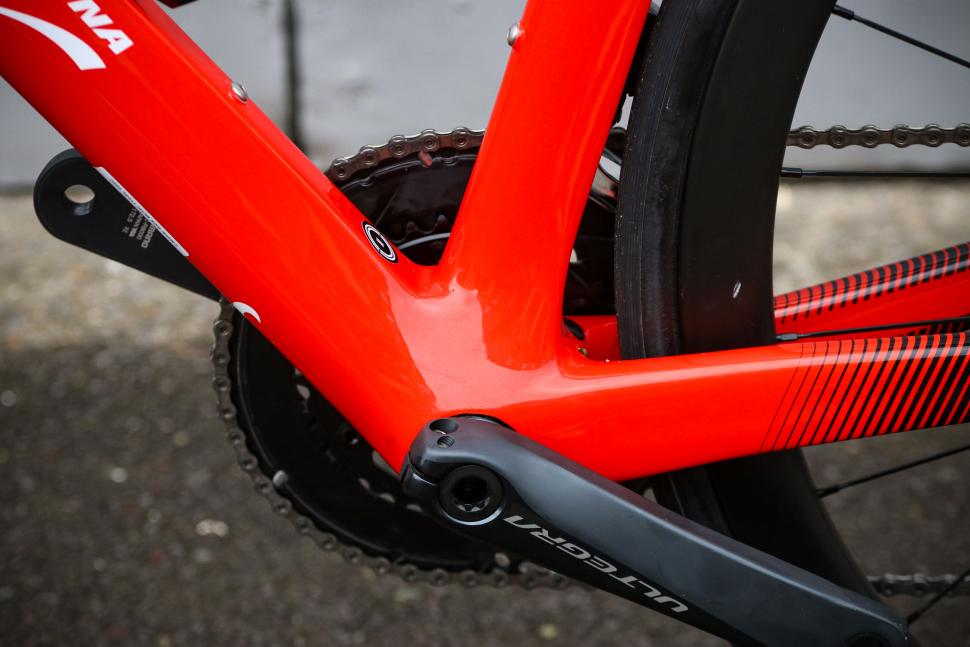

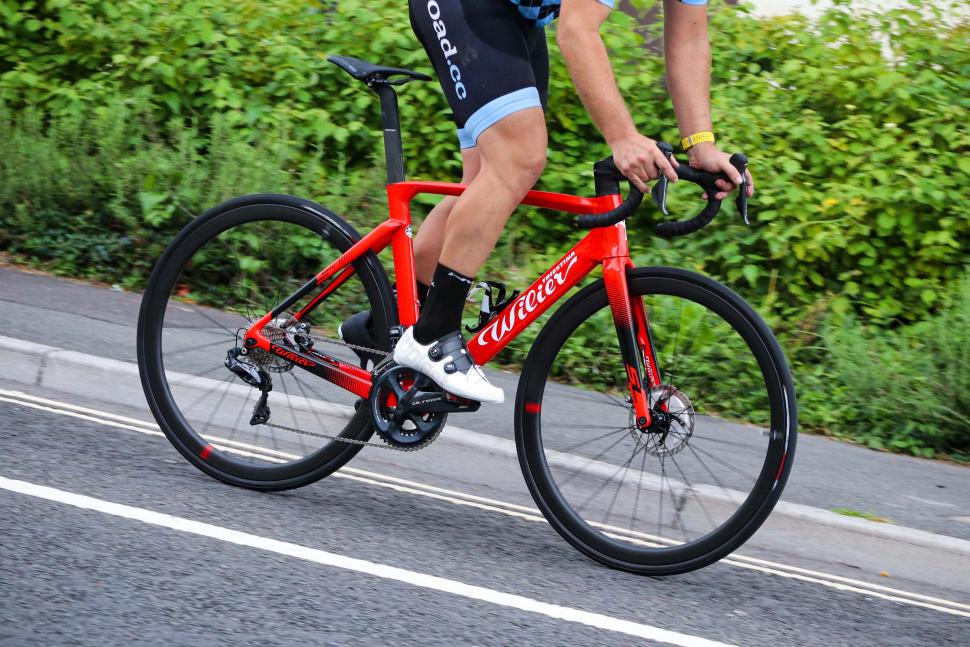
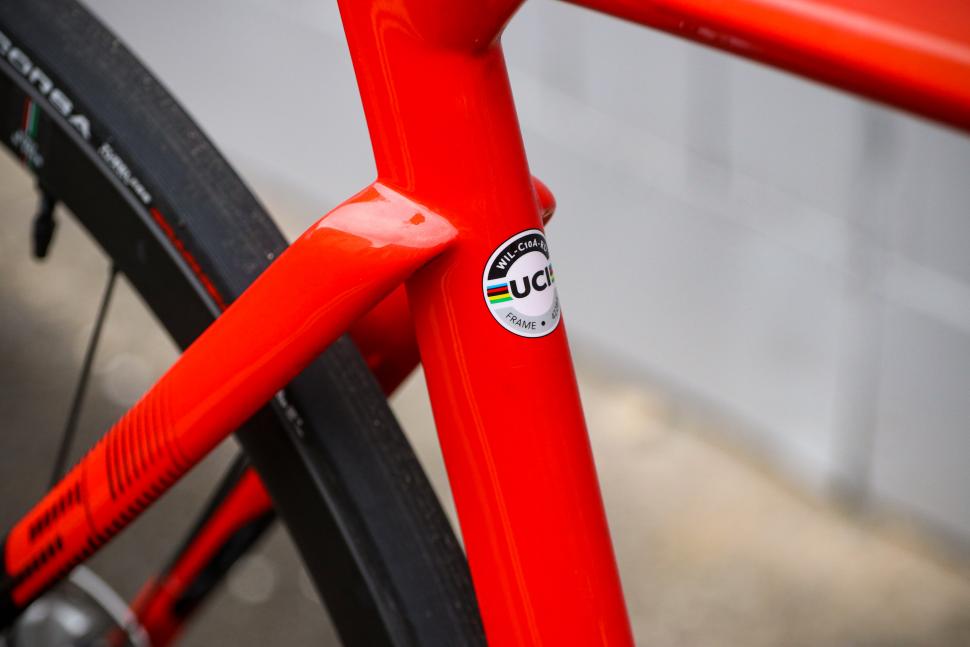
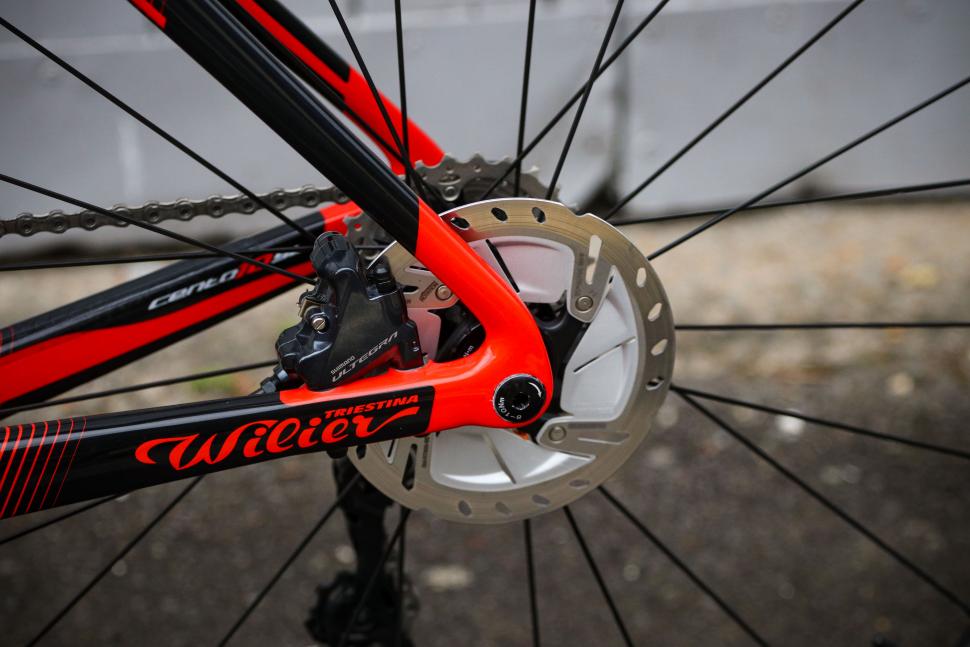
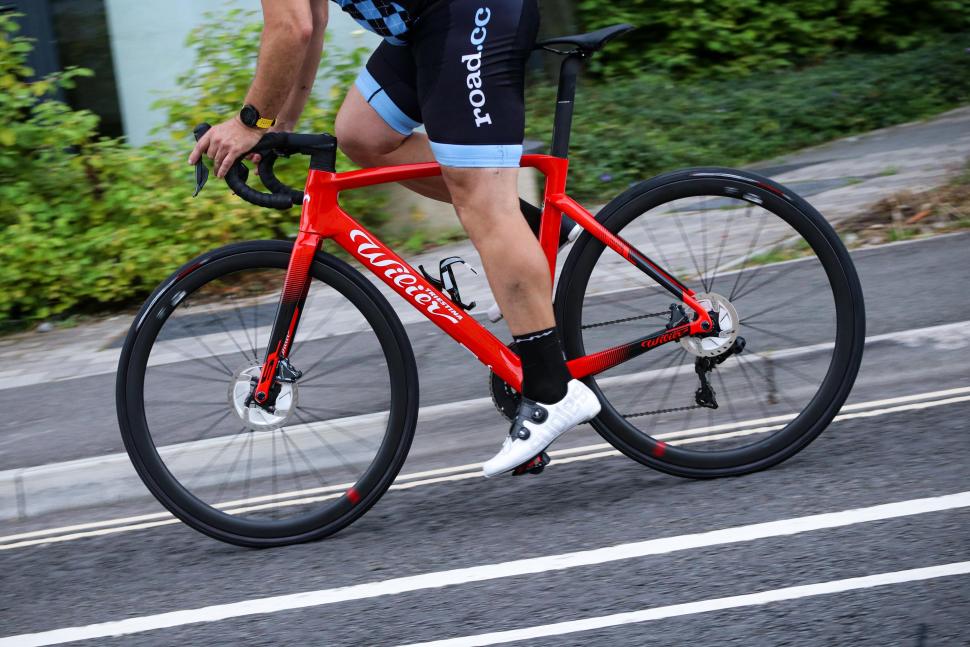
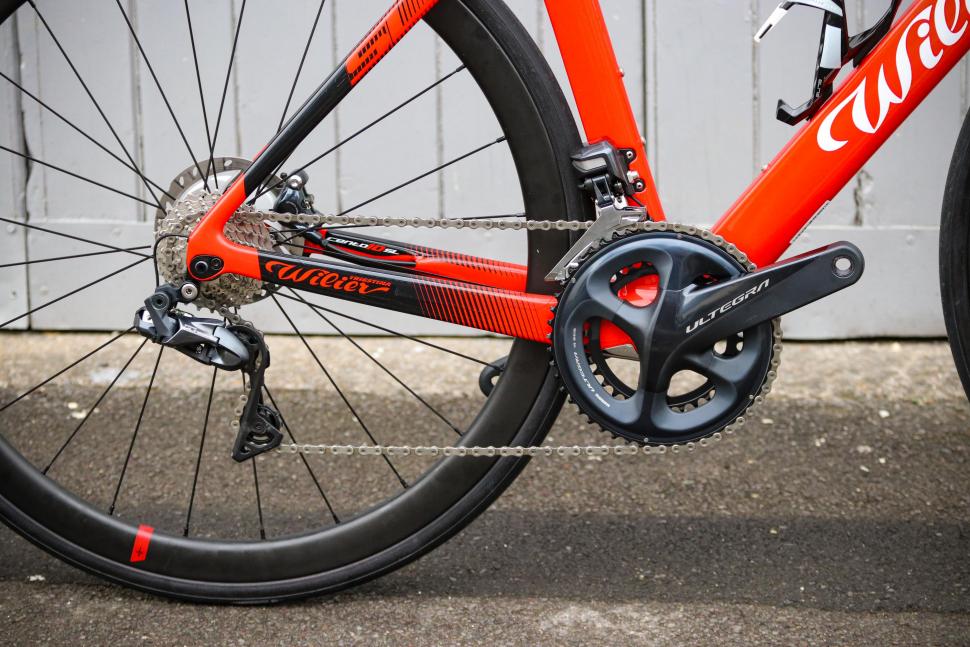
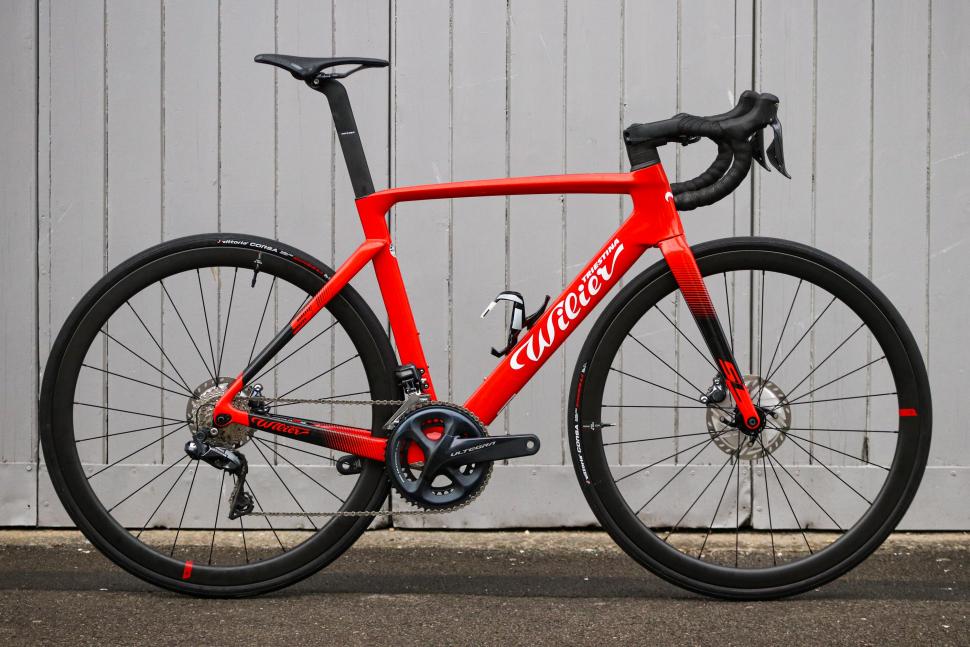
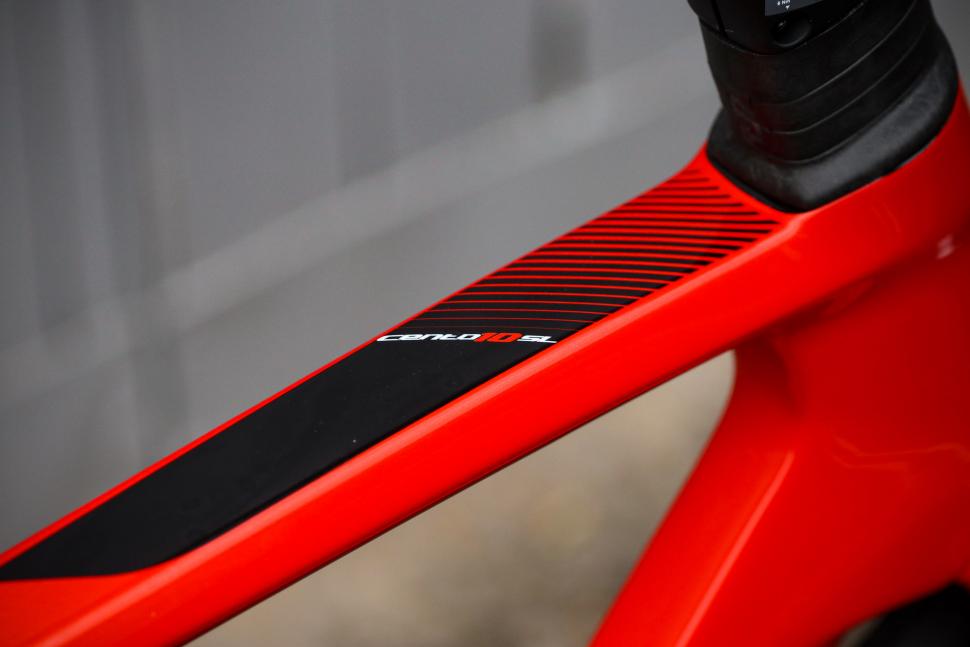
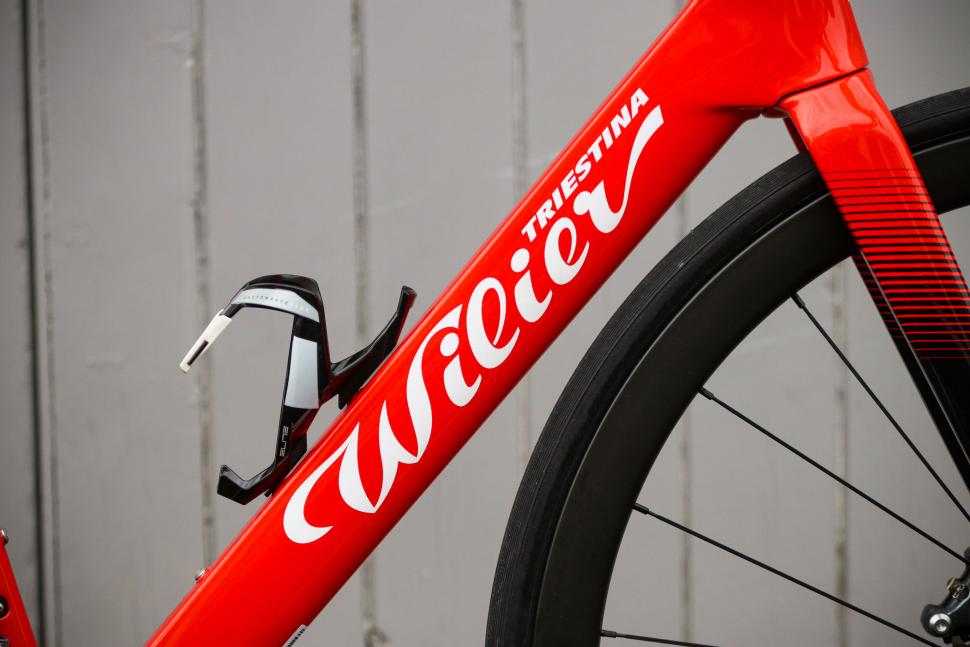
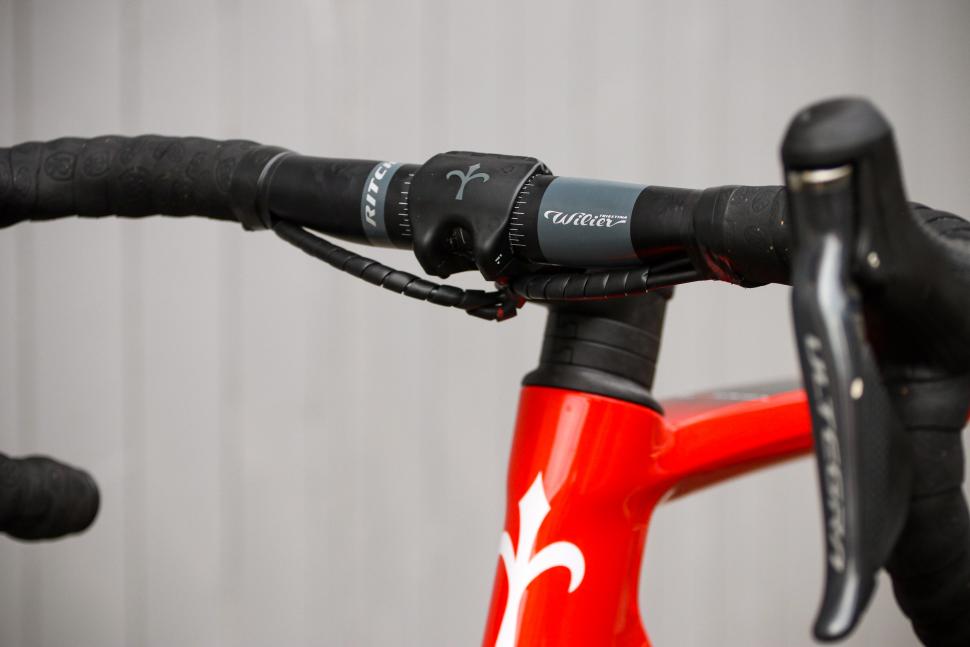
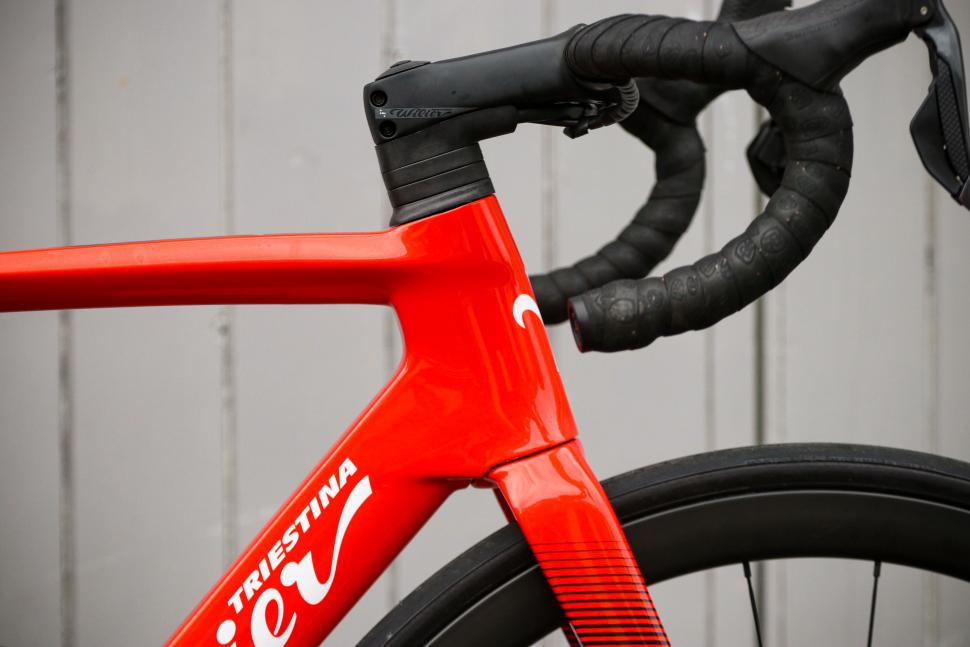
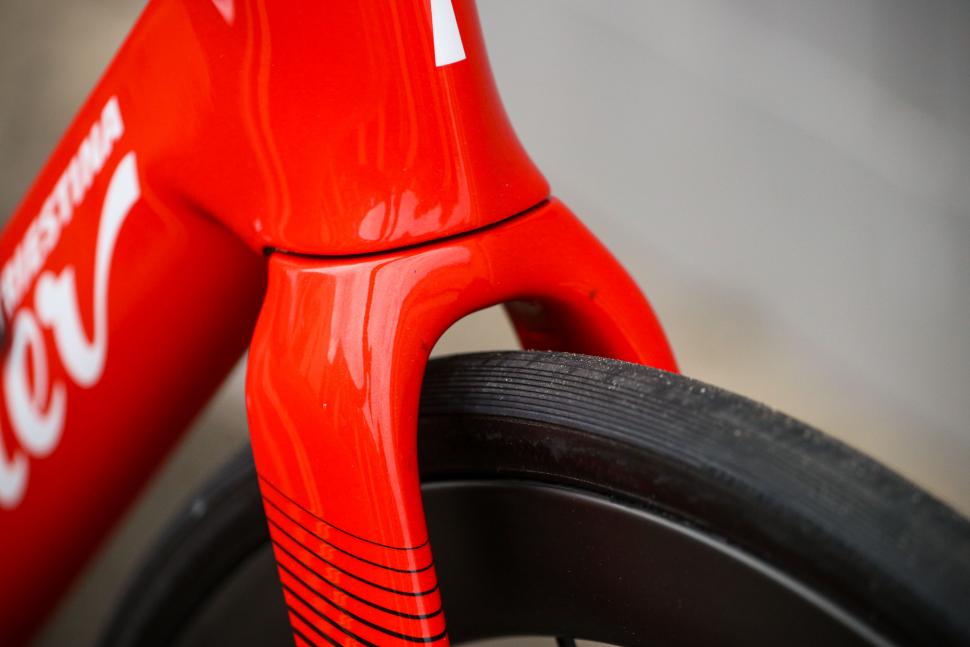

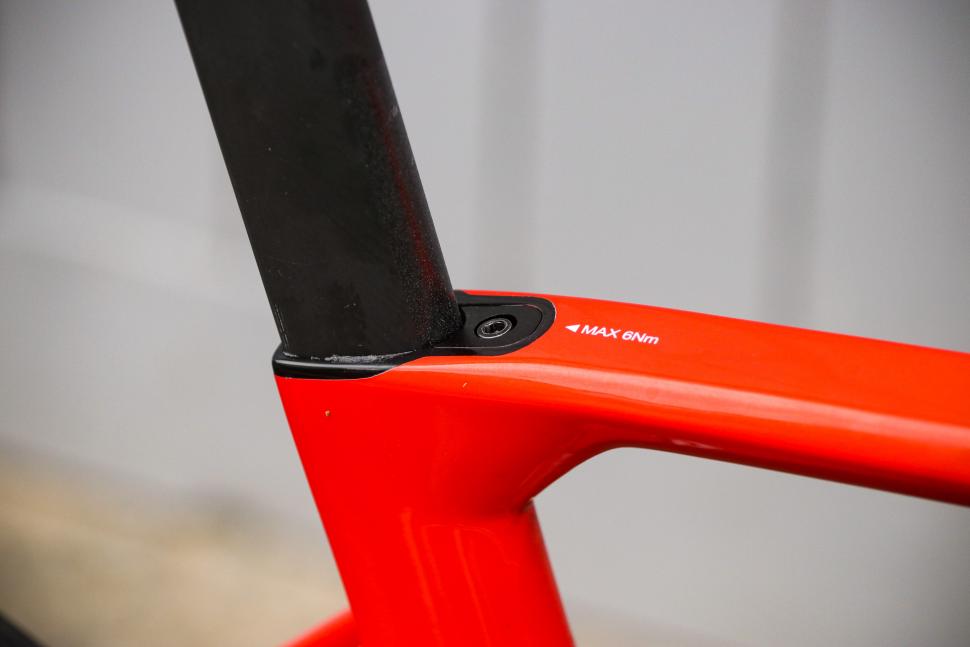
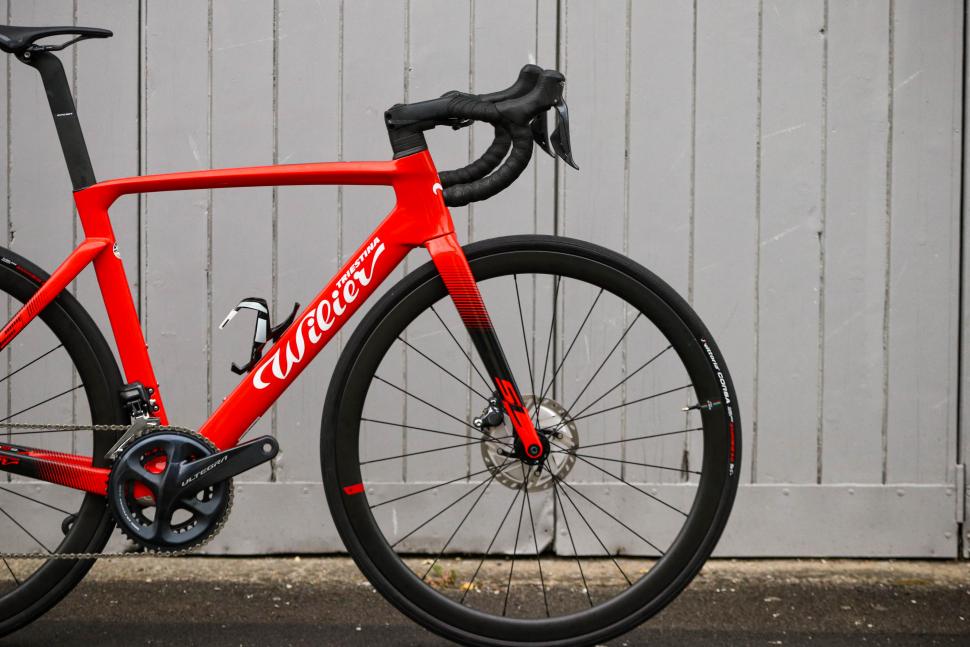

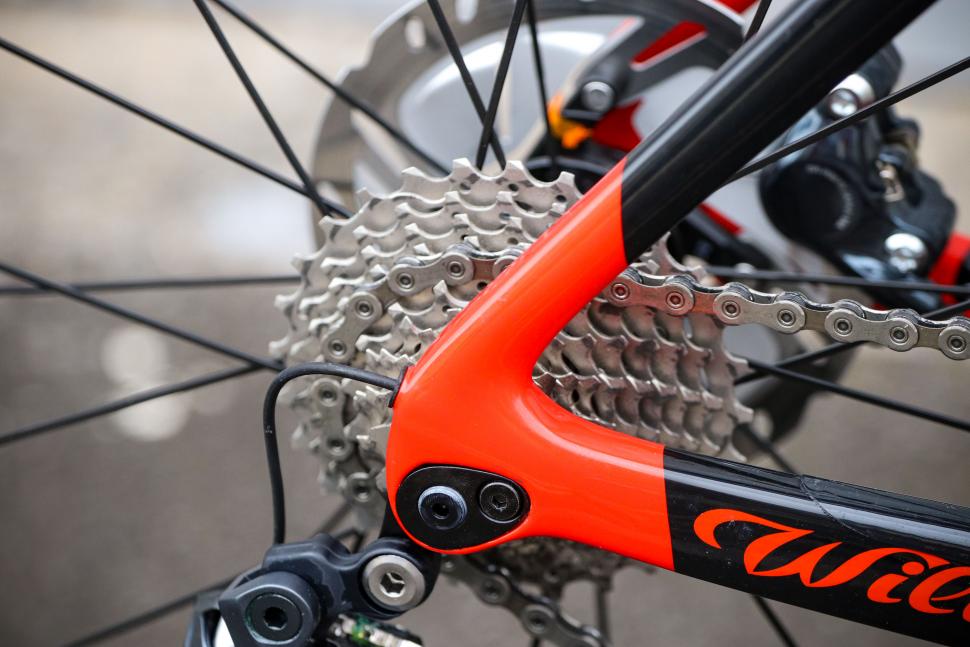
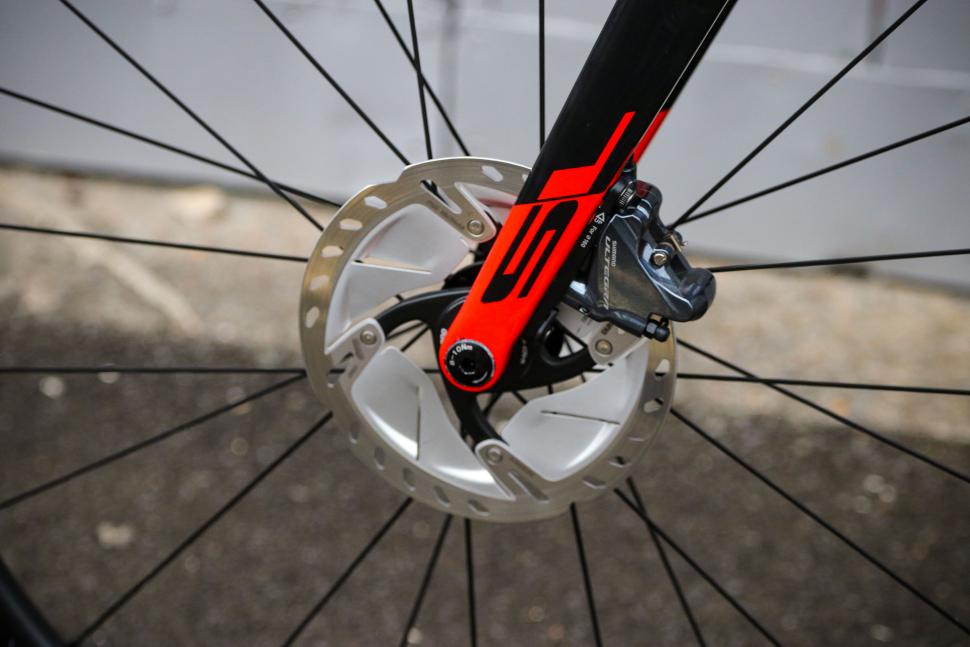

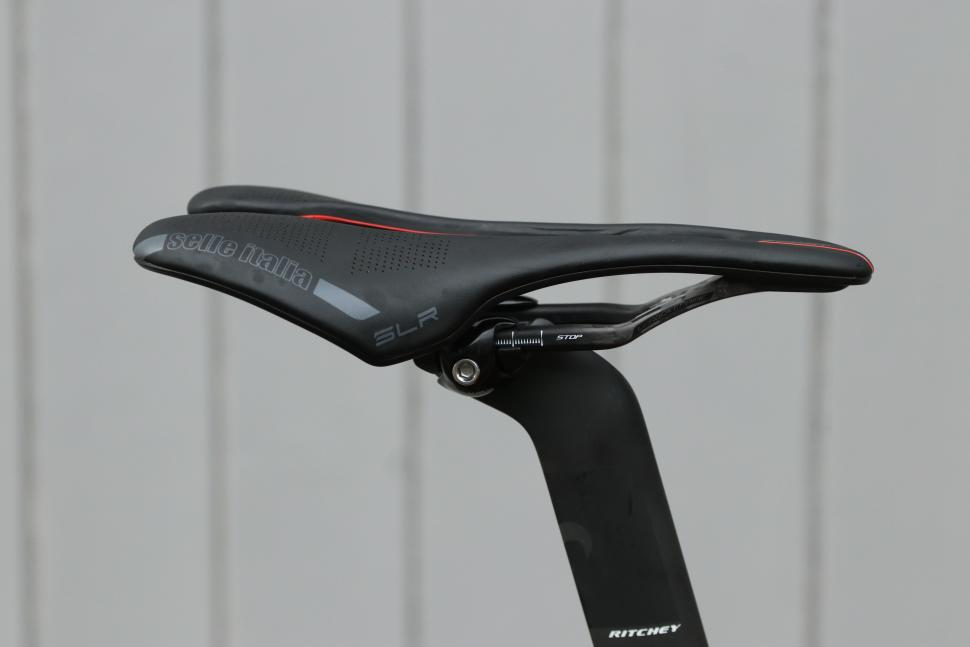

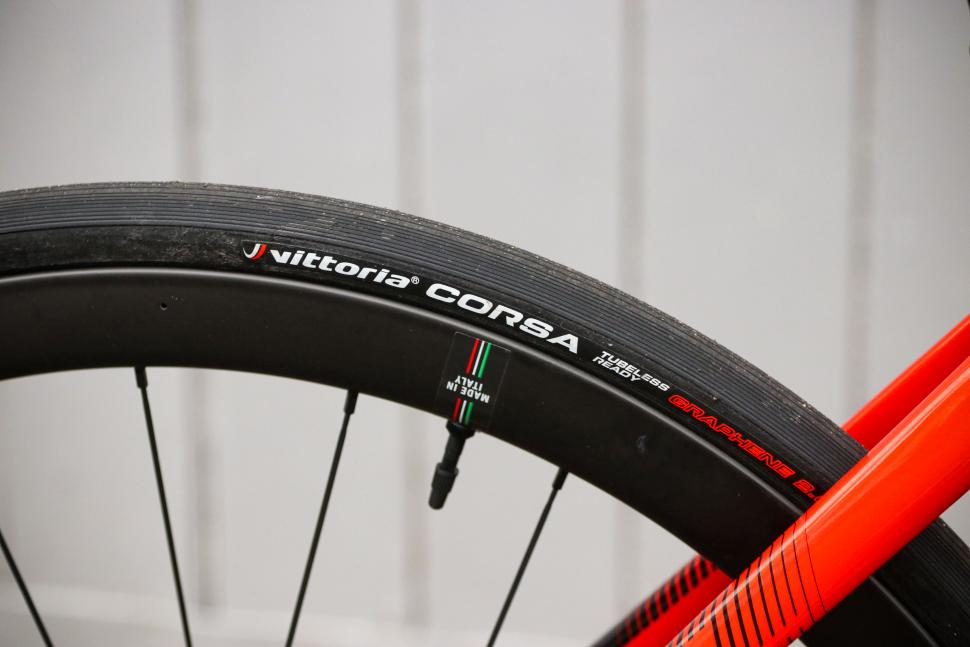




Add new comment
3 comments
I've got a Cento 10 Air and its definitely the best ride I've had.
Cousin to BMC Roadmachine 02 THREE?
Sounds pretty similar to the Orro Venturi STC review...so which is better???